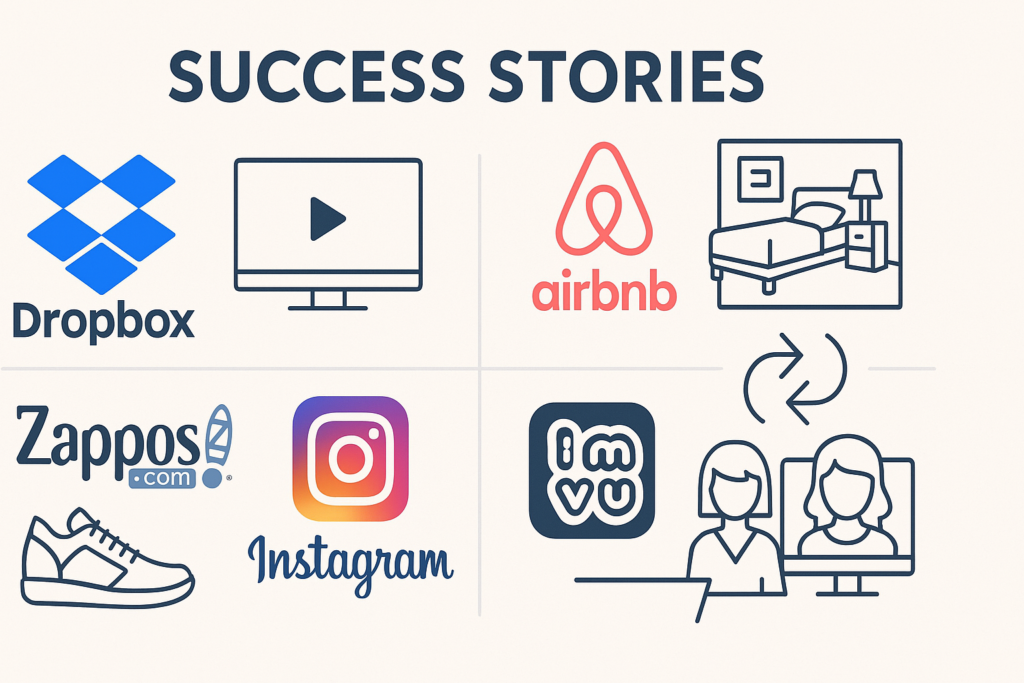Did you know that 90% of startups fail? Sounds scary, right? But Here’s the surprising part, 42% fail because there’s no market need for their product. Ouch. Enter the Lean Startup, a game-changing approach that helps entrepreneurs avoid costly mistakes. Companies using lean startup methodology launch products 40% faster and waste 50% less money than traditional startups. That’s huge. So, what’s the secret? Continuous innovation, real-time customer feedback, and rapid iteration. If you want to succeed without burning cash, this is your way in. Let’s dive into why lean startup methodology is reshaping the entrepreneurial world.
My Lean Startup Journey: From Chaos to Clarity

A few years ago, I had a brilliant idea, or so I thought. I poured money into building the “perfect” product, convinced it would be an instant hit. Months later? Crickets. No customers, no traction. My mistake? I followed the traditional startup approach, investing heavily before even testing if people wanted it. Frustrated, I stumbled upon the lean startup methodology. Instead of guessing, I started testing. I launched a minimal viable product (MVP), gathered feedback, and iterated quickly. Within weeks, I had paying customers.That’s when it clicked. Lean startup examples like Dropbox and Airbnb didn’t succeed by luck. They used smart, data-driven strategies. And so did I.
The Lean Startup Approach: Why It Changes Everything

Forget the old-school way of doing business. The Lean Startup methodology changes the game. No more spending years locked away, perfecting a product nobody asked for. Instead? Rapid testing. Quick feedback. Smart adjustments. This approach kills waste. Speeds up product launches. And most importantly, it makes sure you’re building something people actually want. The result? Faster growth. Less risk. A real shot at success. Want to stay out of the startup graveyard? Then ditch the old-school way. Lean startup methodology isn’t just smart, it’s survival.
Lean Startup vs. Traditional Business: The Key Differences
- Traditional: Months of planning before launch.
- Lean Startup: Launch fast, iterate faster.
- Traditional: Large investments upfront.
- Lean Startup: Small experiments, minimal risk.
- Traditional: Business plans based on assumptions.
- Lean Startup: Data-driven decisions from real customers.
Lean Startup Methodology: What It Is and Why It Matters

The lean startup methodology is a scientific approach to building businesses efficiently. It focuses on three key principles:
1. Build-Measure-Learn
This cycle is the foundation of the Lean Startup methodology. Instead of spending months or years perfecting a product before launch, businesses create a Minimum Viable Product (MVP) , the simplest version of the product with essential features. This allows startups to test ideas quickly and see if customers actually want the product.
After launching the MVP, startups measure customer reactions. Do people use it? What features do they like? What problems do they face? This data is then used to refine and improve the product. The faster this cycle is repeated, the quicker businesses can adapt to market needs.
According to CB Insights (2023), 42% of startups fail because they create products that nobody wants. By continuously testing and improving, businesses avoid wasting resources on unnecessary features.
2. Validated Learning
Many traditional businesses make decisions based on gut feeling or assumptions about what customers want. The Lean Startup methodology replaces guesswork with data-driven insights. Every product change, feature update, or business pivot must be backed by real customer feedback and behavior.
Instead of assuming a new feature will improve user experience, startups collect measurable data, such as customer engagement rates, retention numbers, or direct feedback before investing further. This ensures that every decision contributes to real growth and prevents spending time and money on unnecessary changes.
A study by MIT Sloan (2022) found that startups that rely on data-driven decision-making grow 30% faster than those that don’t.
3. Pivot or Persevere
Not all ideas succeed on the first try. If data shows that a product is failing to gain traction, businesses must pivot, change their approach, modify the product, or even shift to a different target audience. If the data proves that the idea is working, they should persevere, scale the business and invest in growth.
Pivoting is critical in a Lean Startup methodology because it helps businesses avoid complete failure. Instead of shutting down, startups analyze what’s going wrong and adjust their direction to meet market demands.
According to the Startup Genome Report (2023), 70% of successful startups had to pivot at least once before finding a profitable business model.
Traditional Startup vs. Lean Startup: The Numbers Don’t Lie
- 75% of venture-backed startups fail, many due to poor planning. (Traditional approach)
- Startups using lean principles are 50% more likely to succeed.
- Companies that pivot once or twice raise 2.5x more money than those that don’t.
- Lean startups reduce costs by 60% compared to traditional models.
- Startups that test ideas early increase survival rates by 35%.
The difference is clear. While traditional startups burn through cash on guesswork, lean startups focus on learning, adapting, and growing strategically.
Lean Startup Examples: Who’s Doing It Right?

1. Dropbox
Started with a simple explainer video instead of building the full product. They gauged demand before investing in development.
2. Airbnb
Initially rented out their own apartment to test the concept before building the platform.
3. Zappos
The founder tested demand by posting shoe images online and buying inventory only when orders came in.
4. Instagram
Pivoted from a location-based app to a photo-sharing platform after testing user behavior.
5. Ries’ IMVU
Eric Ries himself (founder of the lean startup methodology) applied these principles to build a $50 million company.
Requirements for a Lean Startup
- A Problem-Solving Mindset: Identify real problems, not imaginary ones.
- Minimum Viable Product (MVP): Start small, test early.
- Customer Feedback Loop: Listen, learn, adapt.
- Data-Driven Decisions: Use analytics, not guesswork.
- Agility: Be ready to pivot when necessary.
The Lean Startup: How Today’s Entrepreneurs Win
Eric Ries’ book, The Lean Startup: How Today’s Entrepreneurs Use Continuous Innovation to Create Radically Successful Businesses, explains why lean startup methodology is the future. The book emphasizes real-world testing, rapid iteration, and the power of failure as a learning tool. If you want to build a successful business, this book is a must-read.
What’s Next? Scaling Your Lean Startup
Once you’ve validated your idea, it’s time to scale. Here’s how:
- Automate processes: Save time and effort.
- Focus on marketing: Drive customer acquisition.
- Expand carefully: Grow only when demand is proven.
- Never stop learning: Keep testing and improving.
Final Thoughts: Lean Startup for the Win
Traditional startups are risky, expensive, and often doomed from the start. The lean startup approach? Smarter, faster, and proven to work. If you want to build a business that thrives, adopt the lean startup methodology today. Learn from lean startup examples, test your ideas, and embrace change. It’s the only way to stay ahead.
Now it’s your turn. Ready to go lean?





